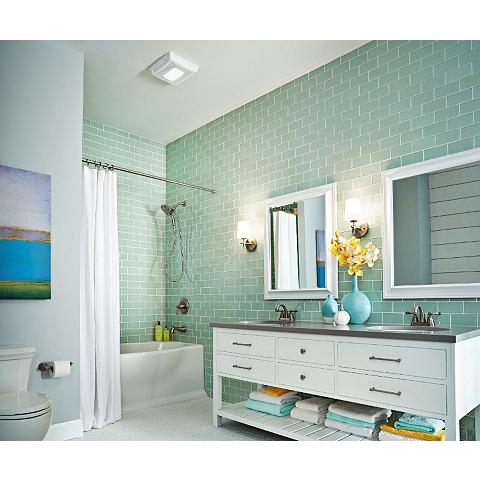How Bathroom Extractor Fan can Save You Time, Stress, and Money.
Wiki Article
Bathroom Extractor Fan Things To Know Before You Buy
Table of Contents8 Easy Facts About Bathroom Extractor Fan DescribedWhat Does Bathroom Extractor Fan Mean?3 Easy Facts About Bathroom Extractor Fan ExplainedSee This Report on Bathroom Extractor Fan
Having a restroom exhaust fan assists maintain that room odor-free. While that perk is necessary for people utilizing the loo, it's eclipsed by the advantages an exhaust fan provides for the bathroom itself. It aerates the space and also dries out the air, the relevance of which can't be overemphasized.Many neighborhood codes likewise require a bathroom exhaust follower. A shower room exhaust fan sucks air out of the shower room as well as routes it outdoors. It develops air flow in the room, with replacement air normally coming through the door or an open home window.
, that may require its very own 20-amp circuit.
This type of fan can be centrally located in the shower room to take care of the shower, bath tub as well as commode. The result air vent expands with a wall surface or the roof.
The smart Trick of Bathroom Extractor Fan That Nobody is Talking About


ft. A 70-square-foot washroom requires a follower with at least 70 CFM, while a 50-square-foot washroom requires a 50 CFM fan. The minimum is generally 50 CFM, so that's the smallest one offered. Washrooms bigger than 100 square feet need even more ventilation than required by the square video footage. The HVI suggests upping the capacity as complies with: 50 CFM per bathroom; 50 CFM for a shower; 50 CFM for a normal bath tub; 100 CFM for a jetted tub.
If you can not find a fan that's an exact suit, it's finest to choose for a design with a bigger ability. Oversizing is suggested if the ceiling is greater than 8 feet.
It normally passes with the attic to the roof or sidewall.
An Unbiased View of Bathroom Extractor Fan
The fan is typically secured to ceiling joists with dental braces. It's clamped to the follower and the exhaust air vent. The follower is wired to a wall surface switch.Since your own vents into your attic room area I would never utilize it either. Probably the biggest use a restroom air vent fan is to assist maintain mold down in washrooms, specifically in over at this website humid areas. Whole lots of suits versus housing tracks have occurred in humid locations where builders just put the most affordable follower in and a couple years later the residents discover mold and mildew.
Building regulations changes will take place, otherwise all ready changed, that residences will have to have a specific air exchange per hour. This is due to the fact that the modern-day residences are being constructed virtually air tight, or around as near it as you can obtain with doors, home windows and other entrance points for air to enter a house - Bathroom Extractor Fan.
In either case, do not pump wetness into attic areas.
9 Easy Facts About Bathroom Extractor Fan Explained
Washroom fans are vital for getting rid of wetness from restrooms and preventing mold and mildew development. Manuel Breva Colmeiro/Getty Images If you've ever before had to deal with a washroom that does not have a working follower or window, you know precisely how undesirable the experience can be. Smells, typically blended away in just a few minutes, might linger for a lot longer, whether from poop or powerful washroom cleaning items.As the cozy air cools, it turns into water, and also gets entraped in the wall surfaces. "Drywall is porous and paint is breathable, so the moisture can leak right into the drywall and develop fungal development," commonly in areas where you can't click to read see it.
Too much wetness may likewise trigger peeling paint and wallpaper as check out here well as also contribute to warped doors and rusted fixtures. Moisture also fuels microbial development and other nasties. By merely transforming on the washroom fan, you reduce a great deal of those problems.
"It was typical in the '70s and '80s for it to be vented into the attic area," says Bayne.
Report this wiki page